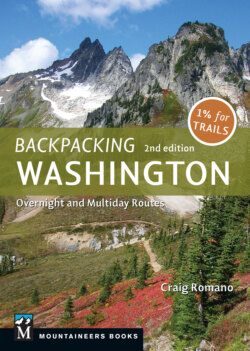Читать книгу Backpacking Washington - Craig Romano - Страница 23
На сайте Литреса книга снята с продажи.
THE BEAR ESSENTIALS
ОглавлениеWhile an extremely small population of grizzlies struggle to survive in the greater North Cascades ecosystem and the Kettle River Range and Selkirk Mountains of northeast Washington, the bear you’re most likely to see is the ubiquitous black bear. Washington State harbors a healthy population of black bears, and your chances of eventually seeing one are pretty good. Your encounter will probably involve catching a glimpse of a bear behind. But occasionally the bruin may actually want to get a look at you. In very rare cases a bear may act aggressively. For instance, a berry failure may cause bears to be hungry and malnourished. Also sows may react if they feel that their cubs are threatened.
To avoid an un-bear-able encounter, practice bear-aware prudence. Always keep a safe distance. If you encounter a black bear at close range, remain calm, do not look it in the eyes, talk in a low manner, and do not run from it. Hold your arms out to appear as big as possible. Slowly move away upwind. The bear may bluffcharge—do not run. If a black bear does attack, fight back using fists, rocks, trekking poles, or bear spray if you are carrying it. If you surprise a grizzly and it charges from close range, lie down and play dead. A surprised bear will usually leave you alone once the perceived threat is neutralized. However, if it charges from a long distance, you should fight back.
While hiking in grizzly country you may want to carry a 12-ounce (or larger) can of pepper spray intended to deter bears. The spray—a high concentration of oils from hot peppers—should fire out at least 20 or 30 feet in a broad mist. Don’t use the spray unless a bear is actually charging and is in range of the spray. For more information on hiking safely while in bear country, visit https://bebearaware.org.
